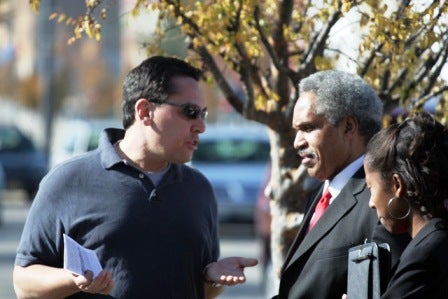Planning Philadelphia’s future

FROM THE DIRECTOR’S DESK, Jan. 15
By Harris Steinberg
Executive Director of PennPraxis
Planning in Philadelphia is a time-honored affair.
William Penn’s and Thomas Holme’s iconic 1683 Portraiture of the city of Philadelphia in the Province of Pennsylvania in America depicted the ideal city stretched compactly between the Delaware and Schuylkill Rivers. Without grand boulevards and imperial vistas such as in Rome, London or Paris, or the dense medieval street-armature of early Boston, the Philadelphia plan was quietly organized around a series of simple interlocking squares that were intended to be forever free and public.
Embedded in our collective city-building DNA is the notion that planning is a public good.
While Philadelphia has often stood as an exemplar of sound American urban design and planning – think of the creation of Fairmount Park, the Benjamin Franklin Parkway and the reclamation of Society Hill to name just a few – we haven’t always heeded the call of our genetic coding. The near-nuclear devastation wrought by the creation of I-95 along the Delaware River is representative of the shameful consequences of large-scale, dehumanizing, post-World War II planning impulses.
Ours is an era of greatly diminished public investment in cities. And as a result, we have come to rely on a wide variety of public-private partnerships such as special services districts, tax abatement development incentive programs and tax increment financing to provide both the infrastructure and services typically provided by municipalities in the past.
And city planning in Philadelphia has lost its way in this fractured, private development-driven wilderness.
In our desperate attempt to attract private development – any development – we’ve allowed the cancerous practice of spot zoning to eat away at the physical fabric of the city – with both City Council and the Zoning Board of Adjustment making blindfolded planning decisions on a parcel-by-parcel basis without regard to the greater good. We’ve allowed developers to pit neighborhood groups against neighborhood groups vying for community benefit agreements in return for granting approval for projects that the local communities are largely ill equipped to comment upon.
We’ve created a Wild West atmosphere in which only the zoning lawyers win. What’s left is a hodge-podge of individual projects without any clear sense of a greater whole. And we’re all bearing the costs of the lack of planning.
We need to ask ourselves what kind of city we want to live in. We need to ask ourselves what role the city should play in creating and maintaining a quality public realm. And we need to ask about the proper role that the development community should play in creating and maintaining public spaces in Philadelphia.
It’s time to reestablish a relationship between sound planning and economic development.
After all, Penn’s concept for Pennsylvania was both a real estate deal and a Holy Experiment. Penn’s plan for Philadelphia clearly delineated between development parcels and public space – public space in which all of the rights and privileges of citizenship can be enjoyed. And Penn, the businessman, understood the relationship between quality city planning and return on investment. One has only to look at the property values around Rittenhouse Square to see how prescient the Proprietor was.
As we move forward with the creation of a civic vision for the Central Delaware, these issues will come into greater focus and sharp relief.
We have the opportunity on the Central Delaware to work together to create a vision that is smart, generous, sound and pleasing. Our goal is to set a table as big as possible so that everyone from the port to the neighbors and from the development community to the politicians can have their voices heard and contribute to the vision that will emerge. Together, we must squarely face issues of traffic and infrastructure, storm water management, public access and recreation, the working port, affordable housing and a host of other issues that have surfaced in the Central Delaware planning process to date.
We have the chance to imagine a new way of doing things in Philadelphia through a public process that is both citizen-driven and open and transparent. We have the chance to look broadly and understand the collective impact of our actions and plan accordingly. Like Penn, who enticed investors with quality of life as codified in a plan, we, too, can marry our values to a plan.
It’s high time that we take planning seriously again. We’re spending large sums of public and private funds and suffering the unfortunate and unintended consequences of traffic gridlock, flooded basements, visual blight and more due to the lack of adequate forethought.
After all, it’s only Philadelphia’s future that is at stake.
WHYY is your source for fact-based, in-depth journalism and information. As a nonprofit organization, we rely on financial support from readers like you. Please give today.



